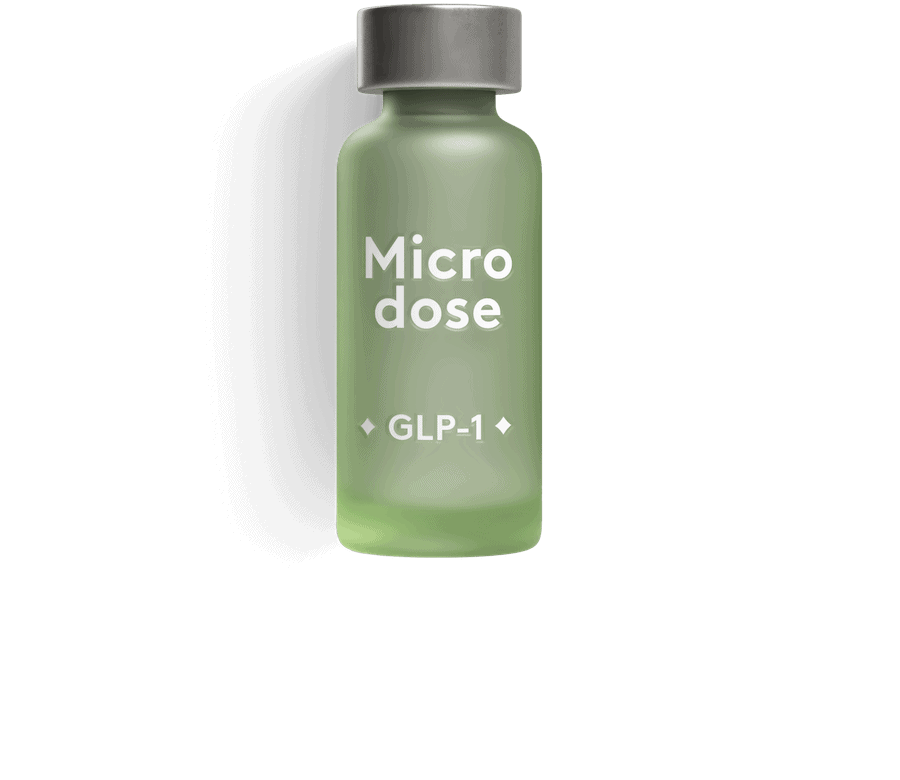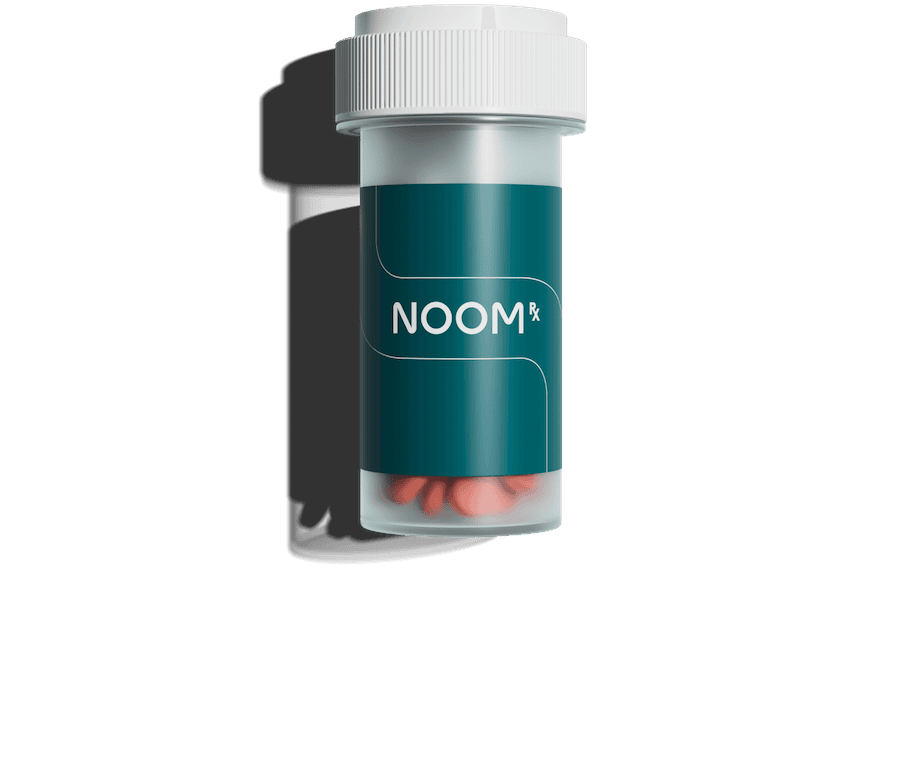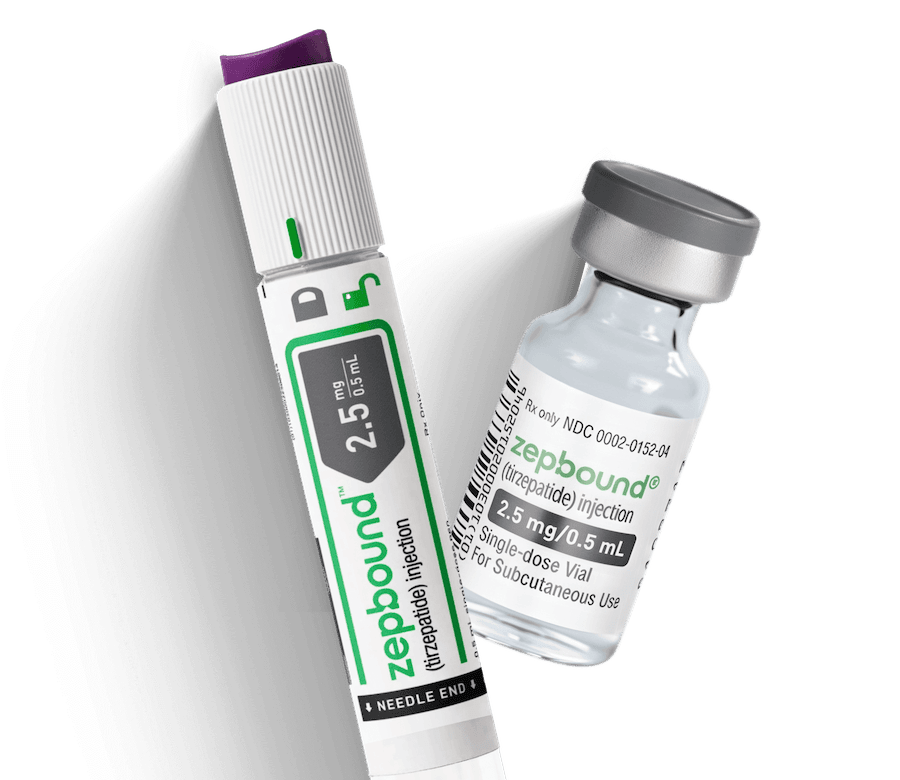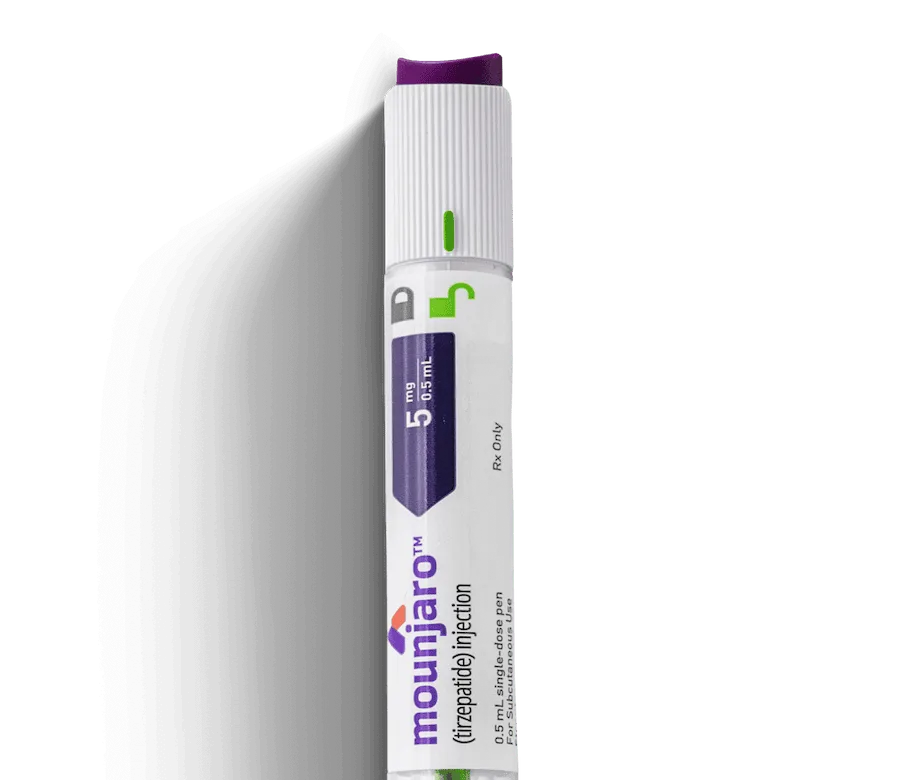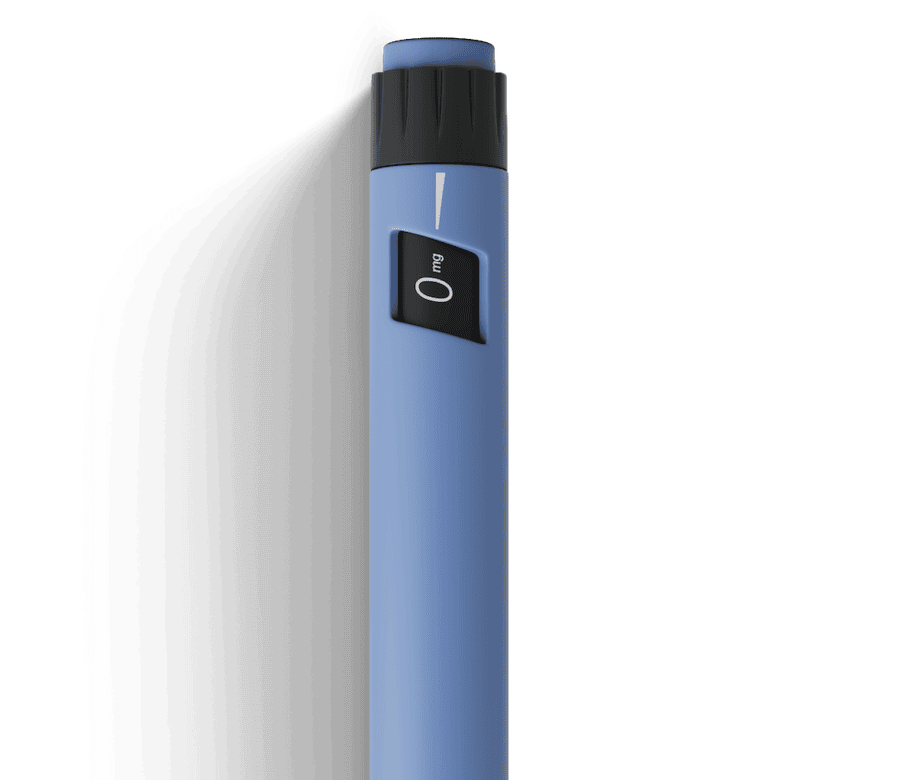- Jardiance® vs. Ozempic®: How do they work?
- Jardiance® vs. Ozempic®: What are the differences?
- Jardiance® vs. Ozempic®: What are the similarities?
- Jardiance® vs. Ozempic®: Which is better for weight loss?
- Who can be prescribed Jardiance® or Ozempic® for weight loss?
- Jardiance® vs. Ozempic®: Cost and insurance
- Jardiance® vs. Ozempic®: Side effects and safety
- Jardiance® or Ozempic®: Which one is right for you?
What you’ll learn:
- Both Jardiance® and Ozempic® are medications approved for the treatment of type 2 diabetes that can be prescribed off-label for weight loss.
- Jardiance® helps the kidneys remove excess sugar through urine, while Ozempic® reduces appetite, slows digestion, and regulates blood sugar.
- Ozempic® is more effective for weight loss than Jardiance®, but Wegovy® might be the better choice.
Since Ozempic® became a household name, using diabetes medications off-label for weight loss has become increasingly common. People are looking beyond diet and exercise and asking their doctors about these medications to help lose weight and improve their health. But Ozempic® isn’t the only drug that people are looking into. Jardiance®, a medication also designed to treat type 2 diabetes, is another option that some are considering for weight loss.
Although both drugs were designed to treat diabetes, they work very differently
- Ozempic® is a once‑weekly injection made with semaglutide. It belongs to the GLP‑1 receptor agonist family, which means it mimics the GLP‑1 hormone to reduce appetite, slow digestion, and regulate blood sugar. It can be prescribed off-label for weight loss. Its sister medication, Wegovy®, contains the same active ingredient (semaglutide) but is approved for weight loss.
- Jardiance® is a once‑daily pill that lowers blood sugar by helping your kidneys get rid of extra sugar through urine. Essentially, your body doesn’t absorb some of the calories from the sugar that you eat.
So which, if either, is right for you? In the sections that follow, we’ll look at how each medication works, the kind of weight‑loss results you can expect, the potential side effects, costs, and other factors to consider.
Jardiance® vs. Ozempic®: How do they work?
Jardiance® and Ozempic® are both diabetes medications that can lead to weight loss, but they are very different. At the heart of that difference are their active ingredients: empagliflozin in Jardiance® and semaglutide in Ozempic®.
Jardiance®
Jardiance® belongs to a class of drugs known as SGLT2 inhibitors. In simple terms, it blocks a protein (SGLT2) in your kidneys that would normally pull sugar back into your bloodstream. Instead, the excess sugar and its calories get washed out with your urine. This can add up to about 240 to 400 calories a day, which means your body may start burning stored fat to make up the difference.
The weight‑loss results with Jardiance are steady but limited. Over about six months, people lost an average of 3% of their starting weight. Jardiance is approved for managing blood sugar in type 2 diabetes, heart failure, and chronic kidney disease, so using it strictly for weight loss is considered off‑label.
Ozempic®
The semaglutide in Ozempic® and Wegovy® works by mimicking the effects of GLP-1 (glucagon-like peptide-1). GLP-1 is released by special cells in your intestines after you eat. These cells respond to nutrients and send signals that help manage digestion and appetite. Semaglutide boosts this action, helping to manage blood sugar, reduce appetite, and slow digestion, which leads to weight loss for many people.
How? There are GLP-1 receptors in several areas of the body that influence weight and blood sugar:
- In the pancreas, they help your body release more insulin when blood sugar levels rise and lower another hormone called glucagon.
- In the brain, especially in areas that control hunger and fullness like the hypothalamus, they help you feel satisfied sooner and reduce appetite.
- In the digestive system, they help slow the rate food leaves your stomach, which keeps you feeling fuller for longer.
Jardiance® vs. Ozempic®: What are the differences?
As you can see, Jardiance® and Ozempic® are very different medications. Here’s a closer look at how Jardiance® and Ozempic® compare across key categories when you are considering them for weight loss.
How they’re taken
One of the biggest factors when choosing between these medications is how often and in what form you’ll need to take each medication.
- Jardiance® is a once-daily oral pill, usually taken in the morning with or without food.
- Ozempic® is a once-weekly injection that comes in a prefilled pen. You will inject yourself just under the skin of your arm, thigh, or stomach. You would take Wegovy® just the same.
Effectiveness for weight loss
When it comes to weight loss, Jardiance® and Ozempic® deliver very different outcomes, with Ozempic® generally being much more effective. When choosing between these medications for weight loss, Wegovy® would be the most effective, and again approved for that purpose. We’ll go through the percentages in more detail below.
Side effects
The side effects of Jardiance® and Ozempic®/Wegovy® are very different because of how they act in the body.
- Ozempic®/Wegovy®: Side effects are mostly digestive, such as nausea, vomiting, diarrhea, constipation, or stomach pain. These are often most noticeable when starting or increasing the dose and usually improve over time. Ozempic and Wegovy side effects are the same since they are both made from semaglutide. Read more about the side effects of Ozempic and Wegovy.
- Jardiance®: Common effects include more frequent urination, urinary tract infections, and genital yeast infections. Some people may also experience dehydration or dizziness due to fluid loss. Read more about the side effects of Jardiance.
Jardiance® vs. Ozempic®: What are the similarities?
Even though Jardiance® and Ozempic® work in very different ways, they share some common ground when it comes to their origins, benefits, and limitations.
Both started as diabetes medications
Jardiance® and Ozempic® were both originally developed to manage type 2 diabetes, not weight loss. Their weight-related effects were discovered later during real-world use and clinical studies. Because of this, doctors sometimes prescribe them off-label to support weight management when appropriate. Jardiance is also FDA-approved to help reduce the risk of heart failure and kidney disease in people with type 2 diabetes.
They can both be very expensive
Since both are brand-name medications and weight-loss use is rarely covered by insurance, both medications can be expensive out of pocket. Here’s a look:
- Jardiance® has a list price of about $630 per month. Actual costs may be lower with private insurance, Medicare, or savings programs, if prescribed for diabetes, heart, or kidney conditions.
- Ozempic® averages around $997 per month without insurance, regardless of the dosage strength. Again, coverage might be possible when it’s prescribed to treat diabetes, but very unlikely for weight loss. We’ll talk more about how to save below.
Neither is available as a generic
Neither medication currently has a generic version, which keeps prices higher than many alternatives on the market. For now, looking into manufacturer discounts, savings cards, and assistance programs, or getting coverage under specific medical conditions are the best ways to manage out-of-pocket costs.
They may help lower cardiovascular risk
Both medications provide benefits for heart health in people with type 2 diabetes. Jardiance® has been shown to reduce the risk of cardiovascular death in adults with type 2 diabetes and heart disease, while Ozempic® lowers the risk of major cardiovascular events like heart attack and stroke.
Rx weight loss, the right way, with Noom
Get access to prescription weight loss medication with Noom.Jardiance® vs. Ozempic®: Which is better for weight loss?
Both medications can support weight loss, but they work differently and deliver results on different timelines. Here’s what research shows about average weight loss with each:
- Jardiance®: Clinical studies show that people taking Jardiance® typically lose about 2 to 3% of their starting weight over 6 months to a year when combined with healthy eating and physical activity. For someone weighing 200 pounds, that’s roughly 4 to 6 pounds.
- Ozempic®/Wegovy® (semaglutide): In clinical trials, people taking semaglutide (2.4 mg) lost an average of 15% of their starting weight over about 68 weeks, with some losing even more. For a 200-pound person, that’s around 30 pounds. Read more about how to find the right dose for weight loss for Ozempic and Wegovy.
How long does it take to see results?
- Jardiance®: Weight changes tend to be more modest and gradual, often noticeable within the first few months, but less than with GLP-1 medications.
- Ozempic®/Wegovy®: Because it’s designed for long-term use, weight loss builds steadily over several months, with the most significant reductions seen after a year or more.
Jardiance® may support modest weight loss while improving blood sugar and heart health, but Ozempic® and Wegovy® generally produce greater and more sustained reductions. The right choice depends on your health goals, medical history, and how each treatment fits into your lifestyle.
Who can be prescribed Jardiance® or Ozempic® for weight loss?
Before starting either Jardiance® or Ozempic®, your provider will review your health history, current conditions, and personal goals. Both medications come with specific eligibility guidelines and safety concerns, so it’s important to know who may qualify.
Who can take Jardiance® for weight loss?
Jardiance® is FDA-approved for type 2 diabetes, heart failure, and chronic kidney disease. While not officially approved for weight loss, some providers prescribe it off-label to support modest reductions in weight.
Who shouldn’t take Jardiance®?
Jardiance® may not be safe if you:
- Have severe kidney disease or are on dialysis
- Are prone to frequent urinary tract or genital infections
- Are dehydrated or have low blood pressure
- Are pregnant or breastfeeding
- Have a history of diabetic ketoacidosis
Who can take Ozempic® for weight loss?
Ozempic® is FDA-approved for type 2 diabetes but is often prescribed off-label for weight loss. Its higher-dose version, Wegovy®, is approved specifically for weight management. You may qualify if you:
- Have a BMI of 30 or higher
- Have a BMI of 27+ with a weight-related health condition like high cholesterol or high blood pressure
Who shouldn’t take Ozempic® or Wegovy®?
Medications with semaglutide aren’t safe if you:
- Have a personal or family history of medullary thyroid cancer (MTC) or multiple endocrine neoplasia type 2 (MEN 2)
- Are allergic to semaglutide or any ingredients in the injection
- Are pregnant, planning pregnancy, or breastfeeding
Talk to your doctor if you have a history of:
- Pancreatitis
- Severe gastrointestinal issues such as gastroparesis
- Kidney problems or diabetic eye disease
Can you switch or combine Jardiance® and Ozempic®?
Jardiance® (empagliflozin) and Ozempic® (semaglutide) can both play a role in weight management and diabetes care, but they work in very different ways. Some people may switch from one to the other, while others may use them together under medical guidance. In either case, it’s important to make changes only with your provider’s supervision, since dosing, timing, and monitoring can differ.
Switching between Jardiance® and Ozempic®/Wegovy®
Switching may make sense if your goals or tolerances change over time.
- Treatment goals: Jardiance® provides modest weight loss with added heart and kidney benefits, while Ozempic® and Wegovy® typically lead to more substantial long-term weight loss.
- Side effect tolerance: Urinary issues or dehydration with Jardiance® or digestive discomfort with Ozempic® can motivate a change.
- Cost or coverage: Insurance or budgeting changes may influence the decision.
Combining Jardiance® and Ozempic®
Jardiance® and Ozempic® are sometimes prescribed together, though usually for people with type 2 diabetes. Clinical evidence shows that combining an SGLT2 inhibitor like Jardiance® with a GLP-1 agonist like Ozempic® can deliver additive health benefits:
- Stronger blood sugar management
- Reduced risk of heart failure and kidney disease progression
- Some additional weight loss in certain patients
Combining them requires careful monitoring for dehydration, compounded side effects, or hypoglycemia if taken with insulin or other diabetes drugs.
Switching or combining Jardiance® and Ozempic® are all possible options, but each comes with trade-offs. Your provider will consider your goals, medical history, and risks before making changes to your treatment plan.
If you take Jardiance® or Ozempic® for weight loss, will you need to keep taking them forever?
That depends on which one you’re on and what your goals look like. Both can help with weight, but they play different roles.
Jardiance®
Jardiance® is usually a long-term medicine for diabetes, heart failure, or kidney disease. Big studies followed people for up to three years and showed steady benefits for heart and kidney health. But when it comes to weight loss, the picture’s less clear. Most research only tracks people for about 3 to 6 months, with a few studies extended 1 to 2 years. Since this medication is used off-label for weight loss, there’s no official “how long” for weight loss use.
Ozempic®
Once a person stops Ozempic®, some of the weight can come back as the appetite suppression action is lost. But tapering off slowly and sticking with good eating and movement habits can help a person maintain progress. Pairing it with a structured plan, like Noom, can make those habits second nature so your results last well beyond the injections.
Jardiance® vs. Ozempic®: Cost and insurance
Cost is one of the biggest factors when choosing between Jardiance® and Ozempic®. Both are brand-name medications without generic versions, and while neither is inexpensive, the difference in pricing and insurance coverage can be significant. Here’s what you can expect for each.
Jardiance® cost
The list price for Jardiance® is about $630 per month without insurance, though what you actually pay depends heavily on coverage and savings programs.
- Private insurance: Most commercial plans cover Jardiance® when prescribed for diabetes, heart failure, or kidney disease. Copays typically range from $0 to $50 per month, depending on the plan. If prescribed solely for weight loss (an off-label use), coverage is unlikely.
- Medicare: Part D plans generally cover Jardiance® for diabetes or approved cardiovascular conditions, with copays often between $0 and $50 monthly.
- Medicaid: Most state programs cover Jardiance® for approved conditions, with copays as low as $0 to $8 per month, though amounts vary by state. Manufacturer coupons usually cannot be combined with Medicaid.
- Veterans Affairs (VA): Jardiance® usually costs around $11 per month for a 30-day supply.
- TRICARE: Pricing varies by pharmacy, but averages $0 at military facilities, about $43 at retail pharmacies for 30 days, or $38 for 90-day mail delivery.
Manufacturer savings
- Jardiance® Savings Card: Eligible people with commercial insurance can pay as little as $10 per month.
- BI Cares Patient Assistance Program: Offers free medication to qualifying patients based on income and insurance status.
Ozempic®/Wegovy® cost
Ozempic® has a much higher price tag, $998 per month without insurance. Let’s take a look at when it might be covered and when it isn’t.
- Private insurance: Coverage is possible for type 2 diabetes, but rare for weight loss. Even with coverage, Ozempic® is usually treated as a Tier 3 or specialty drug, with copays ranging from $50 to $150 per month after prior authorization.
- Medicare: Part D plans cover Ozempic® for diabetes, certain cardiac, or kidney conditions, but not for weight loss. Copays usually run $10 to $50 monthly, capped by the 2025 Inflation Reduction Act, which limits annual drug costs to $2,000.
- Medicaid: Most states cover Ozempic® for diabetes, with copays typically between $1 and $5, though weight loss coverage is very limited. Some states, like New York and California, expanded coverage for weight-loss drugs, but Ozempic® is often excluded unless prescribed for diabetes.
- VA and TRICARE: The VA will cover Ozempic® only for diabetes under CHAMPVA. TRICARE covers it for diabetes, with copays depending on supply length and location.
Manufacturer savings
- Ozempic® Savings Card: For patients with commercial insurance, this program can bring costs down to as little as $25 per month for up to 48 months.
- Novo Nordisk Patient Assistance Program (PAP): May provide Ozempic® for free to uninsured patients who meet strict income and medical eligibility requirements.
- Novocare® Pharmacy: Offers discounted pricing ($499 per month) and direct shipping for people without insurance coverage.
For more tips on savings and insurance coverage, check our Ozempic® cost guide and Wegovy cost guide.
Jardiance® vs. Ozempic®: Side effects and safety
Jardiance® and Ozempic® both influence weight, but their side effects reflect how differently they act in the body. Jardiance® works in the kidneys to remove extra sugar, while Ozempic® acts on digestion and appetite hormones.
Common side effects
Most side effects are mild and improve as your body adjusts. Here’s what people often experience:
- With Jardiance®: Increased urination, urinary tract infections, and genital yeast infections are most common since the drug encourages sugar to leave through urine. Some people may also notice dehydration symptoms, like dizziness or lightheadedness.
- With Ozempic® (and Wegovy®): Digestive issues such as nausea, vomiting, diarrhea, constipation, or stomach pain are common when starting or increasing the dose. These usually ease over time as the body adapts.
Learn more about the side effects of Ozempic and Wegovy.
Rare side effects and warnings
While uncommon, both medications can sometimes lead to more serious effects that need medical attention.
Jardiance®: More severe side effects
While most people taking Jardiance® only experience mild symptoms, there are rare but serious reactions to watch for:
- Serious urinary tract infections (UTIs): Signs include burning with urination, fever, pelvic or back pain, or blood in the urine. Contact your doctor right away if these occur.
- Ketoacidosis: Symptoms include nausea, vomiting, stomach pain, unusual tiredness, or trouble breathing—even if your blood sugar isn’t very high. This is a medical emergency and requires immediate care.
- Dehydration and low blood pressure: Watch for dizziness, fainting, or difficulty standing. These can happen when the body loses too much fluid; contact your provider promptly.
- Low blood sugar (hypoglycemia): More likely if you take Jardiance® with insulin or other diabetes medicines. Signs include shakiness, sweating, rapid heartbeat, or confusion. Seek medical help if these persist or worsen.
- Fournier’s gangrene: A rare but severe genital infection marked by fever, pain, redness, or swelling. Get emergency medical help immediately if you notice these symptoms.
Ozempic® and Wegovy®: Serious side effects and warnings
Ozempic® is generally safe for most people, but certain side effects require immediate medical attention. Always follow prescription guidelines and check in with your clinician if you notice changes.
- Pancreatitis: Symptoms include severe abdominal pain that may radiate to the back, with or without vomiting. This is a medical emergency; stop taking Ozempic® and get immediate care.
- Vision changes: Signs include sudden or significant eyesight issues. Get immediate medical attention if sudden vision changes occur.
- Low blood sugar (hypoglycemia): Watch for dizziness, shakiness, blurred vision, fast heartbeat, or jitteriness—especially if combined with other diabetes medications. Seek immediate medical care.
- Kidney problems: if you experience decreased urination, swelling in the ankles or legs, fatigue, or shortness of breath, get immediate medical attention. These may be linked to dehydration from nausea or diarrhea.
- Gallbladder problems: Symptoms include upper abdominal pain, fever, jaundice, or clay-colored stools. Get immediate medical help.
- Allergic reaction: Signs include swelling of the face, lips, tongue, or throat; difficulty breathing or swallowing; or a rapid heartbeat. Seek emergency medical attention right away.
- Thyroid tumors or cancer: Though seen only in animal studies, symptoms like neck swelling, hoarseness, or difficulty swallowing should be evaluated immediately.
For more detailed guidance on potential risks, see our guide on Jardiance or Ozempic® safety page.
Jardiance® or Ozempic®: Which one is right for you?
Choosing between these two prescriptions comes down to how they fit your health goals, routine, and budget. Here’s a quick side-by-side look at the key factors to keep in mind:
| Category | Jardiance® (empagliflozin) | Ozempic® / Wegovy® (semaglutide) |
|---|---|---|
| How it works | An SGLT2 inhibitor that helps the kidneys flush out extra sugar through urine, lowering blood sugar and calories absorbed. | Both GLP-1 receptor agonists that slow digestion, reduce appetite, and regulate blood sugar. |
| How you take it | Daily oral pill | Weekly self-injections |
| FDA approval and other uses | FDA-approved for type 2 diabetes, heart failure, and chronic kidney disease; sometimes prescribed off-label for weight loss. | Ozempic®: FDA-approved for type 2 diabetes; off-label for weight management. It’s also approved for cardiovascular and kidney protection in people with diabetes. Wegovy®: FDA-approved for weight loss. Also approved for cardiovascular protection in people with obesity and for MASH with moderate to advanced liver fibrosis. |
| Weight loss | Average loss of about 3% of body weight over 3 to 6 months in studies; results vary. | Average loss of 15% of body weight over 12 to 16 months |
| Insurance coverage | Often covered for diabetes, heart failure, or kidney disease; not usually covered for weight loss. | Ozempic®: Might be covered for diabetes; rarely covered for weight loss. Wegovy®: Rarely covered for weight loss. |
| Cost without insurance | List price around $630 per month; actual cost varies by insurance and savings programs. | Ozempic®: List price around $998 per month; $499 per month through NovoCare® Pharmacy. Wegovy®: List price $1,350 per month; $499 per month through NovoCare® Pharmacy. |
| Available as a generic | No | No |
Alternatives to Jardiance® and Ozempic®
If Jardiance® or Ozempic® aren’t the right fit, other prescription options are available, ranging from GLP-1 medications to non-GLP-1 choices.
Each works in different ways—some curb appetite, others alter how your body absorbs calories—and they vary in cost, effectiveness, and convenience. If you want to explore weight loss medication further, see if you qualify for Noom Med. A clinician can assess your needs and prescribe the right medication for you, if needed.
GLP-1 receptor agonists
Beyond Ozempic®, other GLP-1 medications help control appetite and blood sugar and support steady weight loss.
| Medication | Brand names and uses | Cost per month (without insurance) | Effectiveness | How it’s taken |
|---|---|---|---|---|
| Tirzepatide – GLP-1/GIP receptor agonist | Mounjaro®: type 2 diabetes, off-label weight loss Zepbound®: weight loss and obstructive sleep apnea (OSA) | Mounjaro®: $1,080 Learn more Zepbound®: Pens: $1,087 Vials: $349 (2.5 mg) $499 (5 mg, 7.5 mg, 10 mg, 12.5 mg, 15 mg) Learn more | People lost an average of 21% of body weight at 72 weeks. | Weekly injection |
| Liraglutide – GLP-1 receptor agonist | Saxenda®: weight loss and heart disease Generic liraglutide: type 2 diabetes, weight loss | Saxenda®: $1,350 Learn more. Generic liraglutide: $470 – $700 Learn more. | People lost an average of 5-6% of body weight in one year. | Daily injection |
Other medications
Prescription options outside the GLP-1 family can also help with weight management, offering alternatives for different health goals or preferences.
| Medication | Brand names | Cost per month (without insurance) | Effectiveness | How it’s taken |
|---|---|---|---|---|
| Metformin (off-label weight loss) | Glucophage®, Fortamet®, Glumetza® | Generic: $4–$15 Brand name: $100–$500+ Learn more. | People lost an average of about 6% of their body weight over six months while taking metformin. | Pill taken up to two times daily |
| Diethylpropion | Tenuate®, Tenuate Dospan® | $40-$85 Learn more. | People lost an average of 10% of their body weight in 6 months. | Pill taken one to three times daily |
| Naltrexone and bupropion | Contrave® | $600-$800 CurAccess™: $99 | People lost an average of 7 to 8% of their body weight in a year. | Pill taken up to twice daily |
| Orlistat | Xenical®, Alli® | $50-$800 | People in a study lost about 10% of body weight after taking Orlistat for 1 year. | Pill taken three times daily with meals. |
Sign up for Noom Digest!
Stay on top of your wellness journey with the latest Noom news, thoughtful articles, and a healthy dose of inspiration delivered right to your inbox.The bottom line: Choosing between Jardiance® and Ozempic®
Both Jardiance® and Ozempic® can be prescribed off-label for weight loss, but Ozempic® is far more effective. Jardiance® may lead to modest weight loss, an average of 3% of body weight, but it’s unlikely to be as effective as semaglutide. And Wegovy®, the version of semaglutide that is approved for weight loss, might be a better option overall. People taking Wegovy® average about 15% of body weight lost.
In the end, though, the “right” choice depends on your health history, your budget, how you deal with side effects, and what your long-term goals look like.
Again, if you qualify, Noom Med can connect you with a licensed clinician who can walk you through the many weight loss medication treatments to see what’s the best fit for you. Then they can prescribe a medication if needed and design a plan that will work for you.
Note: Ozempic®, Jardiance®, Mounjaro®, and metformin are not FDA-approved to treat obesity or for weight loss.
Why you can trust us
At Noom, we’re committed to providing health information that’s grounded in reliable science and expert review. Our content is created with the support of qualified professionals and based on well-established research from trusted medical and scientific organizations. Learn more about the experts behind our content on our Health Expert Team page.



